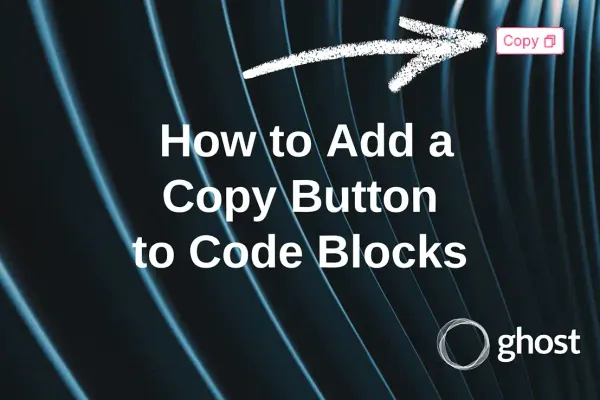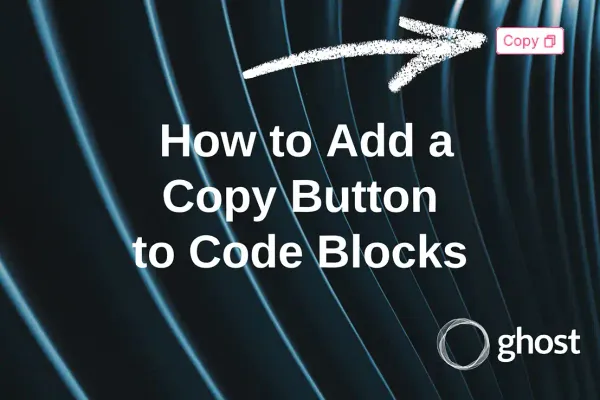How to launch AdSense advertising?
Using my experience as an example, I will tell you how to successfully connect and launch advertising on the pages of your blog. We find out what exactly is necessary to pass the inspection and whether it is true that the number of views affects it

Connection
Of course, it all starts with setting up your AdSense account and connecting it to your website. The next step may be working with the Ads.txt file if you want more control over the ads. But these are just prerequisites that in no way guarantee results.
The connection process is described in more detail in another post. We won't dwell on it here.

How to Check if Everything is Fine?
After successful setup, on your homepage, you'll be able to see the status of payment settings, ads, and your websites.
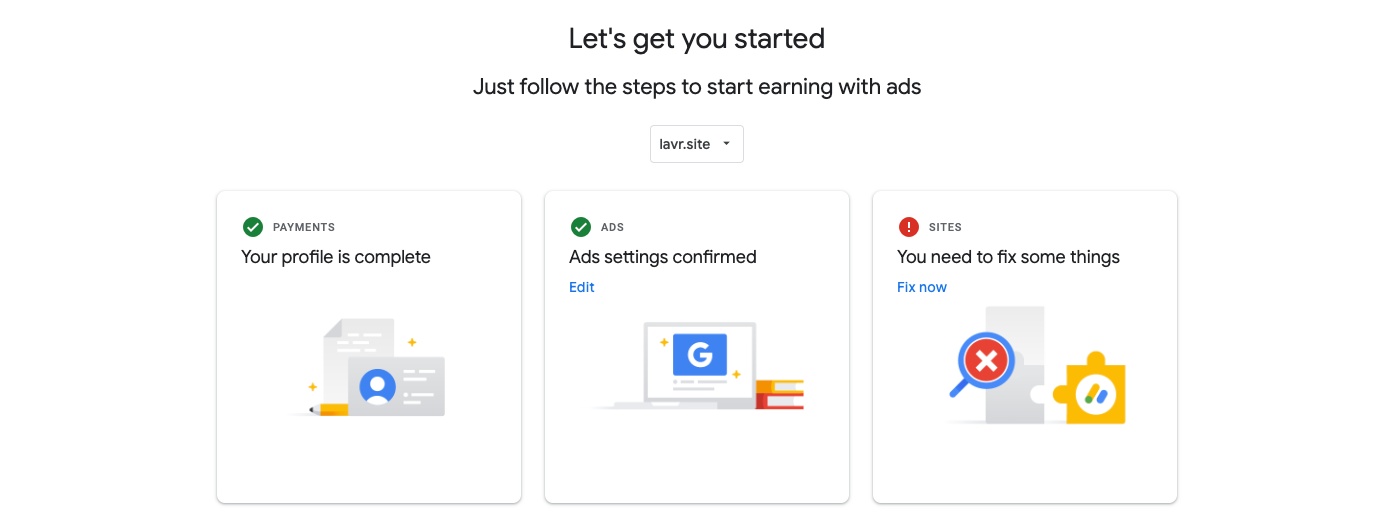
And as seen in my blog example, there are issues in the "My Sites" section.
Unfortunately, AdSense never directly indicates which check you didn't pass. So, by clicking "Fix now," let's see what happens next.

And we see that there are some policy violations, which we can review, fix on our website ourselves, and when we're ready, we can apply for a review.
I understand that you can submit applications an unlimited number of times. Remember that this also takes some time. From my experience, I haven't seen it faster than within a day, if not longer.
Also, later on (after several unsuccessful attempts), there are restrictions on when you can submit your next application — meaning not before a certain specified date. Here's an example:

Google AdSense provides a comprehensive guide for connecting your website. I recommend using it.
Verification Process
This is the most challenging stage for every website. And here, I didn't succeed on the first try.
Once upon a time, I had a YouTube channel that covered the cost of a $70 Lego set through ads, but the requirements for monetization there are quite different. Specifically, you need to have a certain number of subscribers (at that time, 600) and not violate copyright laws, along with a few other rules that are really hard to break when you're creating original content.
So, in the case of the blog, taking this hurdle head-on didn't work out for me, and I received a rejection (see the next screenshot), where upon deployment, there is additional information. It generally outlines potential issues, and no one will specifically tell you that you need three more publications, or that one or the other needs to be longer in text, or something else. You just have to take it and dissect it point by point.
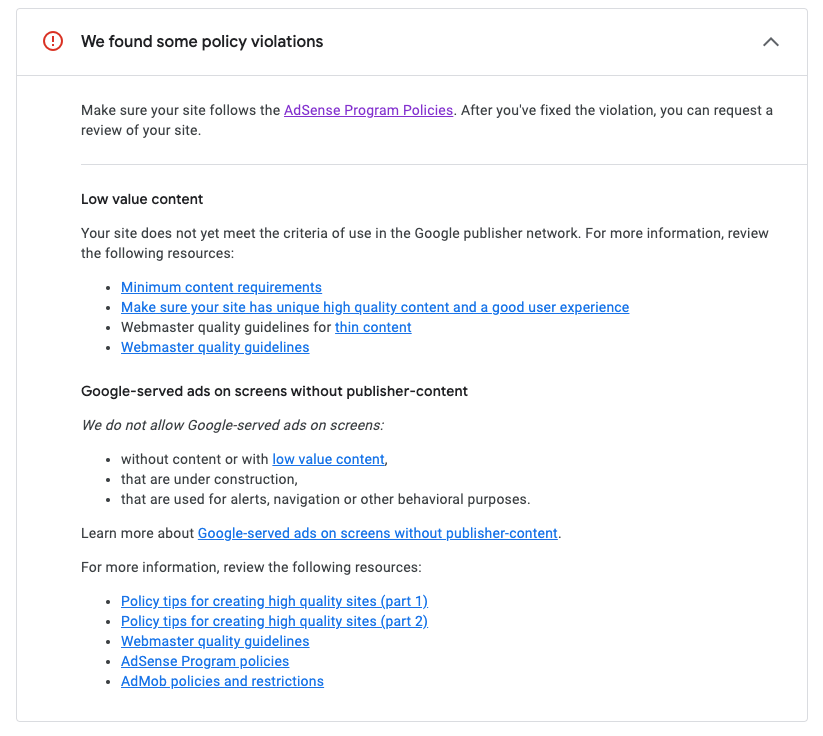
Low-Quality Content
Imagine an empty website filled with a bunch of ads and no useful information. Does it make sense for advertisers to publish their ads there? What benefit do users get from visiting such a site for just a second and then closing it?
AdSense has specific requirements regarding the content of your site. At a minimum, it should contain a sufficient number of pages with unique, preferably original and useful content that complies with the platform's rules.
I don't know if there have been cases of refusal to advertise on sites with plagiarism, but refusals for empty sites certainly exist. The quality of content is quite a subjective parameter, in my opinion, and therefore, the only good indicator could be the audience's engagement. We'll talk more about this later.
Number of Publications
I launched my blog and connected AdSense but received a rejection to place ads. My content is entirely original, translated into two languages to expand the audience. The first attempt to apply for ads was when I made the first post on this blog. The next attempt was already with ten unique articles on my blog, but I still got rejected.
It is said on the internet that there should be a minimum of 20 publications with substantial content. That means not just a title and a paragraph or only pictures, but something more substantial.
I continued to fill my blog, and it was only on the fourth or fifth attempt that I successfully launched ads. Let's take a closer look at my metrics from Google Search Console.
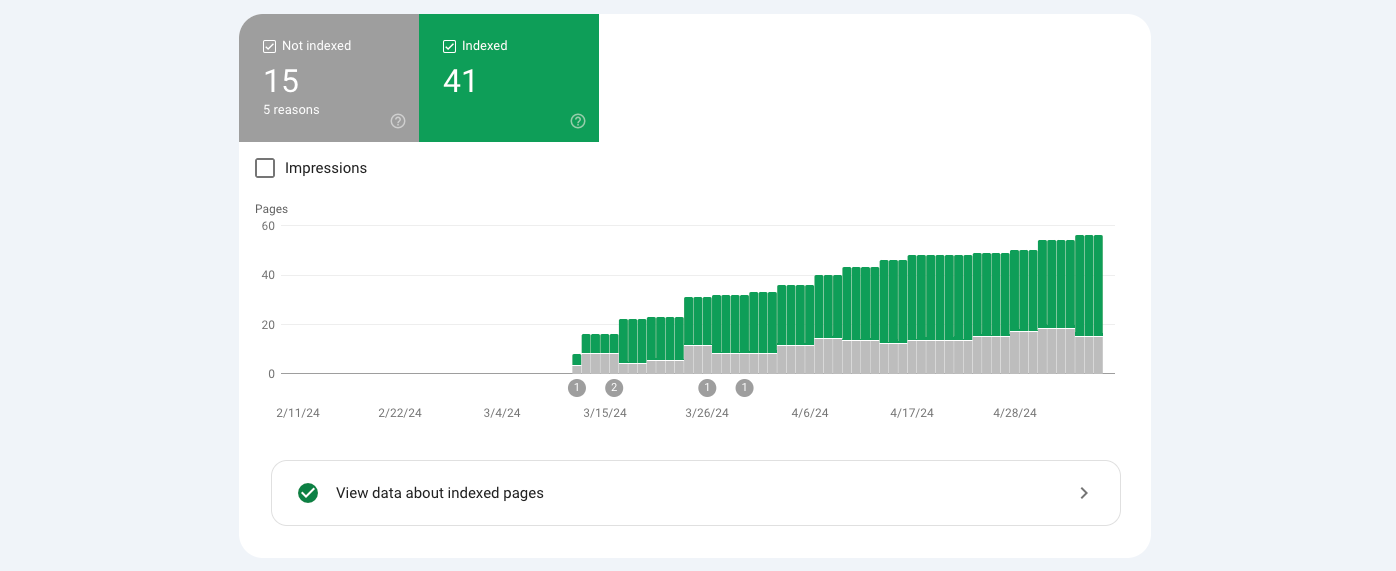
At the time of the review, I had 41 pages indexed, including:
- 14 pages are tag pages like https://lavr.site/tag/*, for example, a Ghost blog tag page: https://lavr.site/tag/ghost-blog/
- 3 general pages:
- https://lavr.site/ - the main site
- https://lavr.site/page/2/ - the second page with publications
- https://lavr.site/author/lavrynovych/ - author page
- 2 pages from the menu:
https://lavr.site/ghost-blog-complete-guidehttps://lavr.site/about-me
Additionally, there are still some pages that are not indexed yet, but if we count only the publications, I had 24 of them.
So, we can summarize that to pass the review, you need to have around 20+ pages with content.
Views
There are no requirements for the number of page views for the Google AdSense approval process. Simply put: you don't need to have a certain number of page views to be accepted into the AdSense program. This is why Google AdSense is great for new blogs and websites.
As proof of my words, I'll add statistics from Google Analytics.
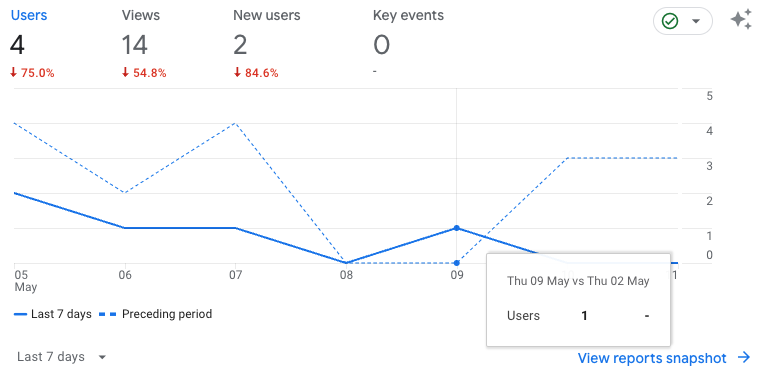
Conclusion
Adding advertising to your blog or website is quite simple if you have sufficient quality content, and this is arguably the only criterion today. Based on my experience, we can confirm that you need at least 20 publications (or pages).
Do not violate AdSense rules, add your site to Google Search Console, and connect Google Analytics as I described in this article. This will improve your understanding of whether you have indexing issues and how many visitors you have. Remember that by linking all these different products, you simplify Google's analysis of your resource.
Because I enabled automatic advertising for my blog, it immediately started to look very cluttered. The ads filled all the available spaces on the screen. I hope that later I will be able to manage the advertising and place it only where I need it.
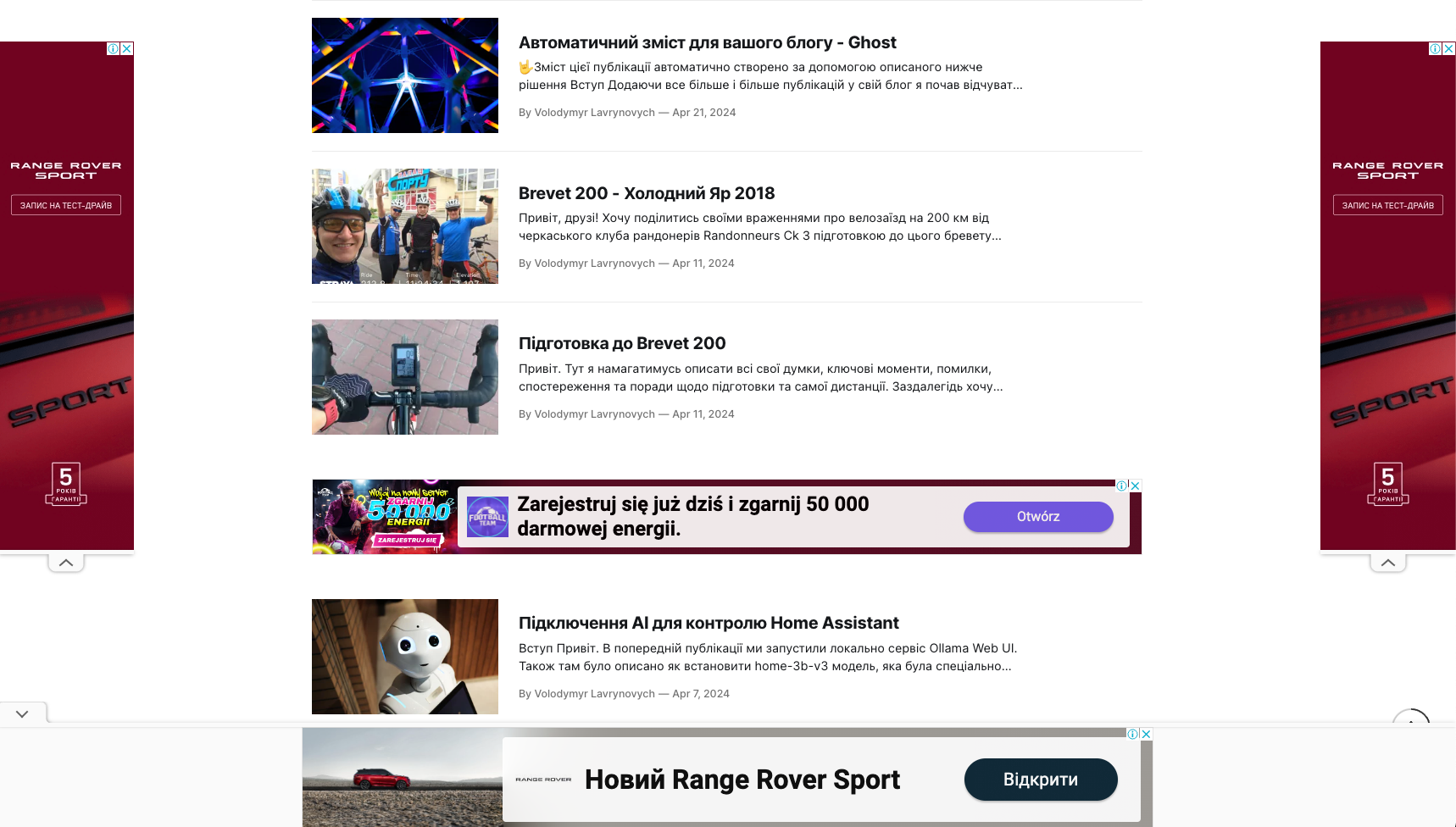
But the goal has been achieved, and that's something to be happy about. I'll explain how to adjust ad placements another time, but starting today, let's start counting the pennies.

This is obviously a joke because if we need a certain amount of content to activate ads, then for earning, we already need real views, as well as content to attract readers. How to earn and how much you can earn are very individual questions. When I have good experience, I will definitely share it, but for now, that's all.
I wish you the same success in connecting AdSense ads and monetizing your experience and knowledge!




